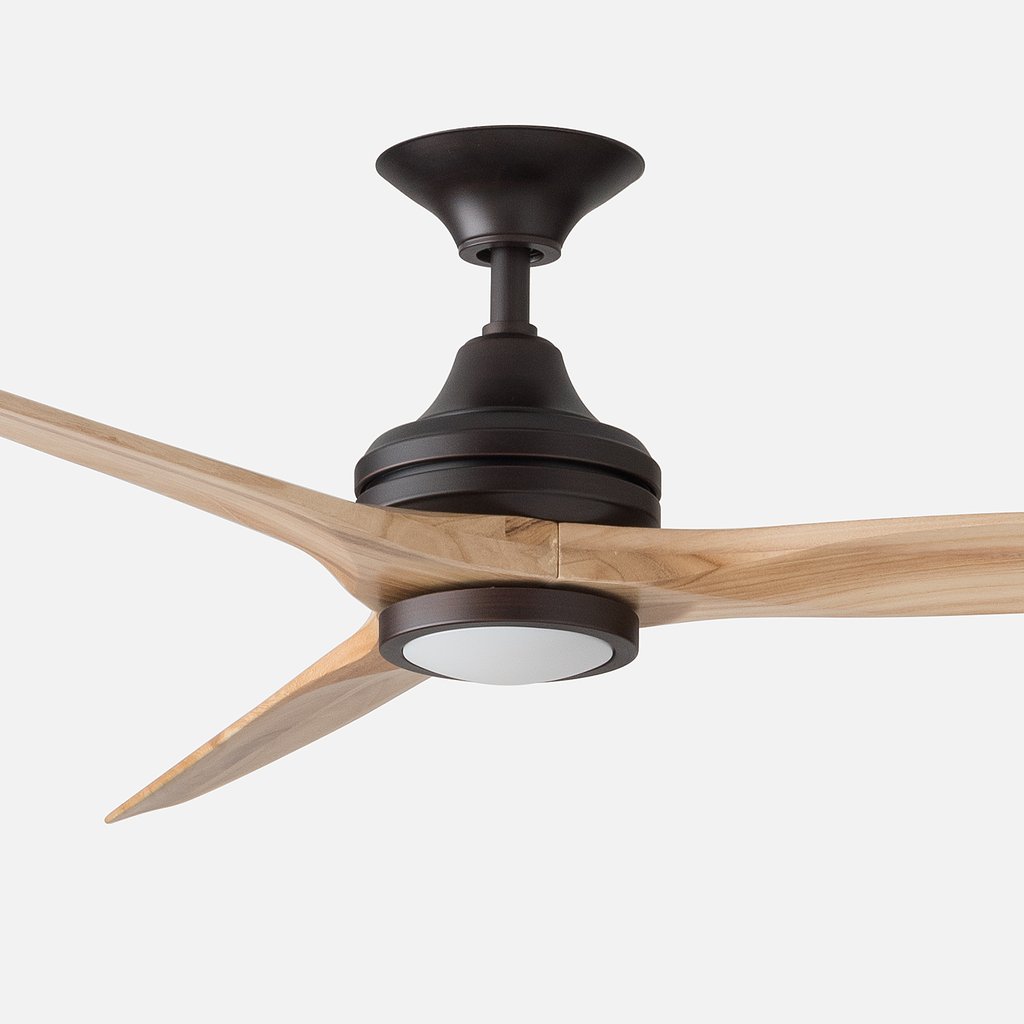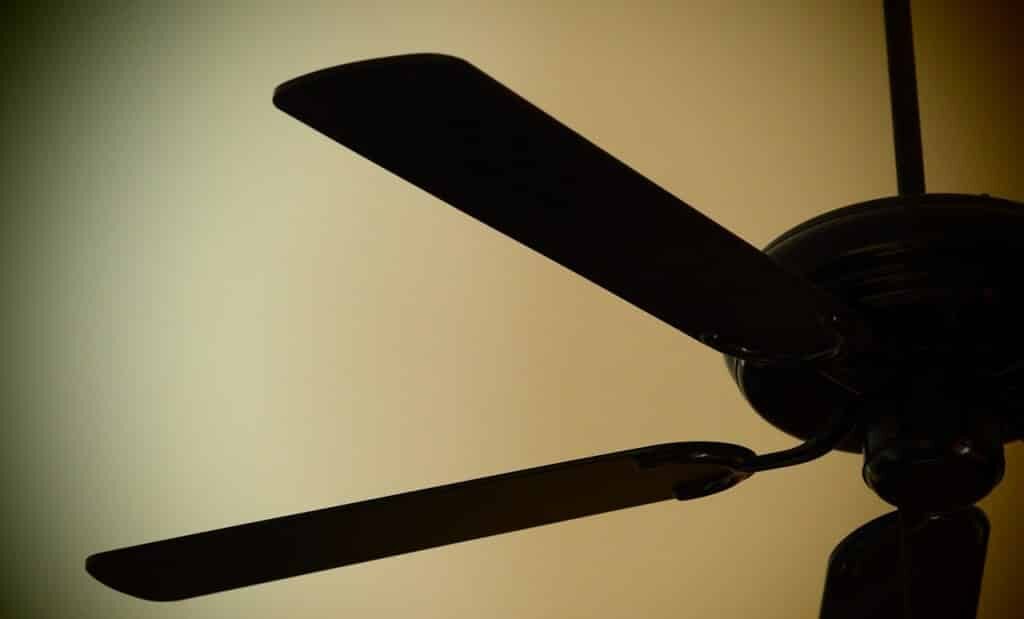Ceiling Fan Buying Guide
Can I install a ceiling fan? – Ceiling Height
If your ceiling is 2.4m or higher then you can typically install a fan that will conform with Australian standards. The standard is to have the blades at a 2.1m height, this is in fact a requirement in many states. You can check the ceiling fan drop (from ceiling to blade) to ensure a fan is suitable for your ceiling height.
High Ceilings
For high ceilings it may be necessary for you to have a longer drop on the fan to ensure it sits at a more optimal height for air movement. Most fans can be purchased with an extension rod as an accessory. This extension rod will typically replace the standard downrod on the fan making the drop greater.
Extension rods are typically available in 90cm lengths. The majority can be cut to size to ensure that the ceiling fan sits at the height that you require. Some manufacturers also produce extension rods in 180cm lengths for exceptionally high ceilings. If a ceiling fan can be used with an extension rod it will be listed as an accessory below the fan listing. Please bear in mind that the above is a guide only – the actual height that the ceiling fan sits is down to you, however airflow will be optimal if the blades are somewhere between 2.1m and 2.5m from the floor.
Low Ceilings
For low ceilings (generally 2.4m or less) we have a category specifically for low profile ceiling fans. These fans are also commonly referred to as ‘hugger’ fans due to the fact that they hug closely to the ceiling. Fans within this category have a lower than standard (30cm) drop from ceiling to blade. For specific details take a look at each individual fan listing within this category, as the drop will vary from model to model.
Which Size Ceiling Fan?
How to select the correct size fan based on your room size
Firstly, all ceiling fans are measured in inches and this measurement relates to the diameter (blade span) of the fan. For example a 48″ fan will measure 48 inches from one blade tip to the opposite tip. A bigger blade diameter means the fan will cover a larger area, it does not necessarily equate to higher power. The most common sizes for bedrooms are 48″ and 52″fans. For a lounge r living area, 52″ and 56″ fans are common. Obviously this will vary depending on the actual size of the room. For very small rooms you may wish to take a look at our small fans category. For big living spaces we also have a category for large ceiling fans.

Ceiling Fan Installation / Selection Guide
INSTALLATION OF ONE UNIT CEILING FAN
The main features of a ceiling fan is to move the entire air in the room, not creating a local wind as in other fans.
To determine the model and mounting position, consider the condition below
H : distance from blade to floor (m)
R : radius of effective floor space of wind spread (m)
S : effective floor area (m2)
Calculation Formula :
R : coefficient x H
S : hR2 , where h = 3.14
L : Distance between Ceiling Fan to another (pitch in M)
A : Distance of overlapping air throw between fan
B : Distance between tip of fan to wall
BL : Blade length (M)
L : (RX2) – 0.4, where 0.4 is maximum allowable overlapping of air throw between fan
L : (RX2) – 0, if minimum A = 0
To calculate B = R – BL

How-To: Our Ceiling Fan Buying Guide
Downrod length? Ceiling pitch calculations? Airflow efficiency? Purchasing the right ceiling fan can be difficult if you don’t have information on your side. Luckily for you, we’re here to help. Read on to learn everything you need to know to equip your space with a beautiful new ceiling fan
Moisture Ratings: Wet Vs. Damp Vs. Dry
Moisture and electronics don’t usually get along, so if your ceiling fan is going to be exposed to the elements, you’ll want to make sure it’s designed to handle them. Our ceiling fans come rated for use in wet environments (areas with where the ceiling provides the only protection from the elements) damp environments (areas that are exposed to full changes in humidity and possibly condensation, such as covered porches) and dry environments (indoors). Wet-rated and damp-rated ceiling fans can be used in dry environments, but dry-rated ceiling fans can only be used in dry environments.
Q: Do your fans come with lights?
A: Most but not all of our fans come with LED light kits. Check the “Details” tab on the product page to see which fans do or do not.
The Golden Ratio: Room Size, Air Flow, and Fan Scale
When choosing the size of fan you need, your primary concern should be for how much air the fan can move. An undersized ceiling fan simply won’t do the job, especially if you rely on your ceiling fan on a regular basis. If you’re more technically inclined, you can check out the spec sheet for each fan model to view how much airflow output is required for a given size of room.
Once you’ve chosen a fan that can be effective in your space, you can start choosing fans for scale. Choosing the smallest necessary fan for your room will give a more traditional and discrete look to the fan installation while a large-format fan can function as a statement piece.

Installing a Ceiling Fan
A ceiling fan can add an interesting decorative touch to a room and will also make the room have a much more comfortable and even temperature. Ceiling fans well placed can increase the efficiency of air conditioners and furnaces because they very quietly mix the warmer air which rises near the ceiling with cooler air that settles near the floor.
Ceiling fan blades generally span a diameter of 36, 42, or 48 inches. You should choose the size that is best for the size of the room in which it is installed. A 48 inch fan spread may look best in a large room and one of that size may be needed to adequately circulate the air. Likewise, a smaller diameter fan spread will work nicely in a smaller sized room. Ceiling fans generally have either 4 or 5 fan blades.
The motor is equipped with a switch that will reverse the direction of rotation of the fan thus blowing air downward or pulling it upward. Pulling the air upward during the colder months pulls the warmer air up and across the ceiling and down the walls to more uniformly distribute the warm air. The downward flow of air is usually done during the warmer months to move the air over people in the room making them feel cooler.
Ceiling fans can also have a light kit added to them as part of the installation. There are several configurations of the light fixture to accommodate differing decorative tastes. The ceiling fan and lights can be operated from a wall switch, by pull chains on the fan housing, or with a remote control.
Ceiling fans can just as easily be installed by persons with limited or no vision as by persons who have good vision by having the right tools and following the five steps described below.
Tools you may need
Straight and philips screw drivers
Pliers that incorporate a wire cutter, sometimes referred to as linemen’s pliers
Needle nose pliers
Wire stripper or sharp knife for stripping insulation from the electrical wire
Allen wrenches for some models, (sometime provided by the manufacturer)
Sturdy ladder or strong tall step stool
Ceiling fan installation prices
Although basic ceiling fans can be relatively cheap to purchase, intallation must be carried out by a qualified electrician to proper standards. Eletricians charge an average rate of $77/hr for ceiling fan installation. The price, however, can go down to $69/hr if the job is pretty straightforward. Complicated installations, on the other hand, can go up to $80/hr. On average, ceiling fan installation jobs cost between $200 – $400. The cost per fan install can be redueced if multiple fans are being installed at one time.
Factors that can affect the cost of ceiling fan installation
Installing ceiling fans is typically a straightforward type of work. However, because the tasks and circumstances vary from job to job, the price of the service changes as well. Here are some things that can influence the cost of a ceiling fan installation service
Number of ceiling fans
It’s common for businesses to charge per fan, so you can expect to pay a higher rate if you have a couple or more ceiling fans to be installed. If you have old fans that need to be removed, this can incur additional fees too.
Controls
Remote-controlled ceiling fans are generally easier to use and install. However, if you prefer to have a wall switch for your fan, rewiring may be needed. This can make the installation a bit difficult to carry out, thus increasing the cost.
Other circumstances
New or additional wiring is sometimes needed for ceiling fans to be installed. Electricians can charge extra for these especially if complicated issues suddenly arise. The height of the ceiling is a factor too as it will determine the ease or difficulty of accessing the area.
Why you should hire a professional to install your ceiling fan
Safety should be enough reason for you to book the services of a licensed tradie. This is to ensure that your ceiling fan will be installed properly. If you’re converting a light switch to a wall switch, this can make the job more complicated. This will definitely require the expertise of a sparkie.